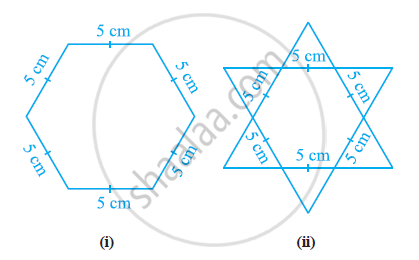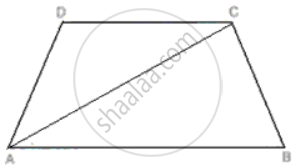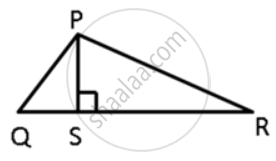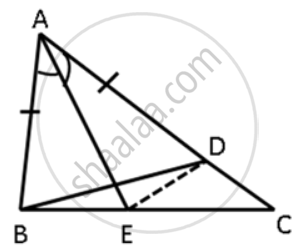Advertisements
Advertisements
प्रश्न
If two sides of a triangle are 8 cm and 13 cm, then the length of the third side is between a cm and b cm. Find the values of a and b such that a is less than b.
उत्तर
The sum of any two sides of the triangle is always greater than third side of the triangle.
Third side < 13 + 8 = 21 cm.
The difference between any two sides of the triangle is always less than the third side of the triangle.
Third side > 13 - 8 = 5 cm.
Therefore, the length of the third side is between 5 cm and 21 cm, respectively.
The value of a = 5 cm and b = 21cm.
APPEARS IN
संबंधित प्रश्न
In the given figure, ∠B < ∠A and ∠C < ∠D. Show that AD < BC.

ABC is a triangle. Locate a point in the interior of ΔABC which is equidistant from all the vertices of ΔABC.
Complete the hexagonal and star shaped rangolies (see the given figures) by filling them with as many equilateral triangles of side 1 cm as you can. Count the number of triangles in each case. Which has more triangles?

In a triangle PQR; QR = PR and ∠P = 36o. Which is the largest side of the triangle?
Prove that the perimeter of a triangle is greater than the sum of its three medians.
ABCD is a trapezium. Prove that:
CD + DA + AB + BC > 2AC.
In ΔPQR, PS ⊥ QR ; prove that: PQ + PR > QR and PQ + QR >2PS.
Prove that in an isosceles triangle any of its equal sides is greater than the straight line joining the vertex to any point on the base of the triangle.
ΔABC in a isosceles triangle with AB = AC. D is a point on BC produced. ED intersects AB at E and AC at F. Prove that AF > AE.
In ΔABC, AE is the bisector of ∠BAC. D is a point on AC such that AB = AD. Prove that BE = DE and ∠ABD > ∠C.
